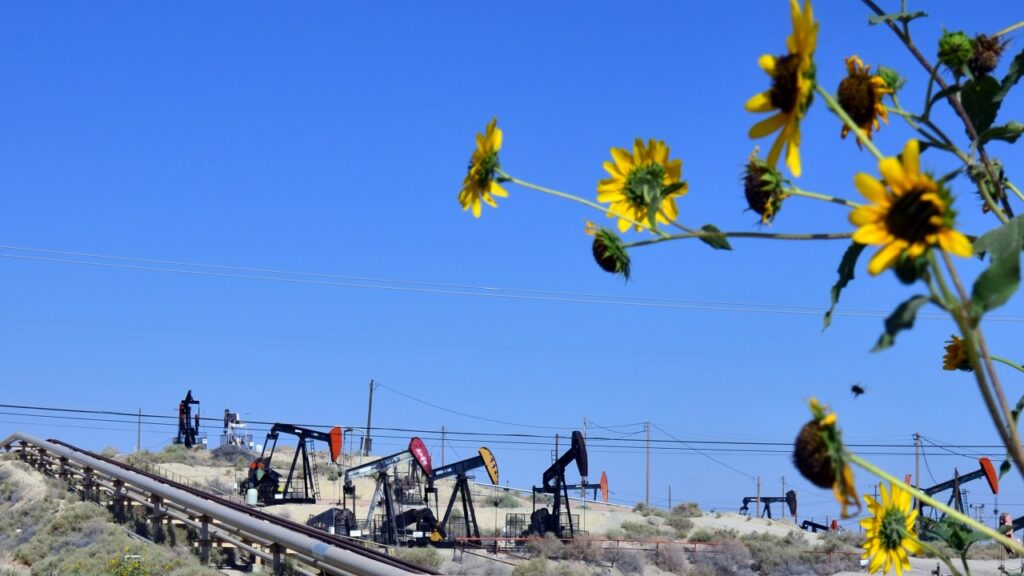
Photo credit to blmcalifornia, CC Public Domain Mark 1
By Kate Gordon and Craig Segall
A crossroads after the climate deal
This legislative session ended with historic and important deals on energy and climate – but also underlined how much remains to be done. As the climate crisis collides with growing economic challenges, the bills look more like the start of a conversation than the end of the story.
California was just revealed as the state with the second highest poverty rate after Louisiana and shares similar levels of income inequality. That reality is already being felt on the ground, not only in inland and rural regions but in the middle of our coastal cities. Electricity and gas prices are straining family finances already, and as climate impacts mount, they will further tax household budgets as well as the capacity of state and local governments to sustain the safety net.
The answer won’t be found in a return to fossil fuels – in fact when it comes to climate impacts, that’s the opposite of the answer. Short-term concessions that address immediate affordability concerns have deepened fissures between legislators and environmental justice communities focused on local harms, especially in Kern County. The incongruity of a climate-leading state relaxing restrictions on oil drilling — even as a short-term measure — underscores how urgently we need a long-term strategy that drives diversification and resilience, not ongoing fossil fuel dependence.
A new foundation — and much to build
For years, headlines have celebrated California’s leadership on clean cars, renewable energy, and emissions reductions. The six-bill climate and energy package helps preserve that leadership and open new pathways. But as the fight over drilling and gas prices shows, it does not resolve the deeper question: how can an oil-producing, climate-vulnerable state build a foundation for climate-resilient prosperity?
For millions of working families, their lived experience remains one of rising costs, stagnant wages, and limited opportunity. Climate shocks — heat waves, blackouts, floods, wildfires — only compound the pressures of an already high cost of living. We need to go further to lower household costs, expand opportunity, and ensure government has the resources to deliver real change.
This session, economic concerns were often pitted against climate priorities. But climate policy is economic policy. If we build on this year’s foundation with sharper focus on equitable growth, we can move beyond this false binary.
Five principles for a climate-smart economy
We believe California must build a new political and economic strategy grounded in five principles – and a political coalition to match, which we are actively working to build.
First, tackle affordability head-on. We need integrated strategies that cut costs while expanding opportunity: renewable energy, efficient buildings, cleaner transportation (with housing options nearby), and regional economic growth in industries that also drive sustainability and climate resilience. Without greater economic opportunity, prices will keep climbing and working families will continue to bear the brunt.
Second, create the institutional capacity to deliver. California needs economic development institutions with the scale to match our climate ambitions. Whether through a new cabinet-level agency or stronger coordination of existing programs, government must be able to drive an economy-wide transition — not just regulate emissions.
Third, reimagine public investment. Instead of scattered grants, California needs coordinated strategies that blend public and private capital to build durable clean-economy industries. Cap and-trade revenue, constantly fought over and limited by law, cannot drive transformation alone. New revenue strategies tied to resilience and development are essential.
Fourth, embrace regional strategies. From sustainable forestry and bioeconomy opportunities in mountain counties to agricultural innovation in the Central Valley to clean manufacturing and electrification around coastal ports, each region needs tailored policies that build on local assets and deliver visible benefits.
Fifth, accelerate project delivery while maintaining fairness. California must speed up housing, renewable energy, and grid upgrades. That means reforming approval processes while preserving environmental protection and community voice.
Why this matters now
The legislative deal shows growing awareness that regulatory tools alone are straining under the weight of politics, costs, and community pushback. Now it’s time to build on that foundation, filling in its cracks and constructing new supports that can carry us forward.
Californians support clean energy. But they also want jobs, lower bills, and safer communities. That’s the promise of a climate-smart economy — and it’s the path we must take.
Kate Gordon is CEO of California Forward. Craig Segall is a former Deputy Executive Officer and Assistant Chief Counsel of the California Air Resources Board. Opinions are their own.

